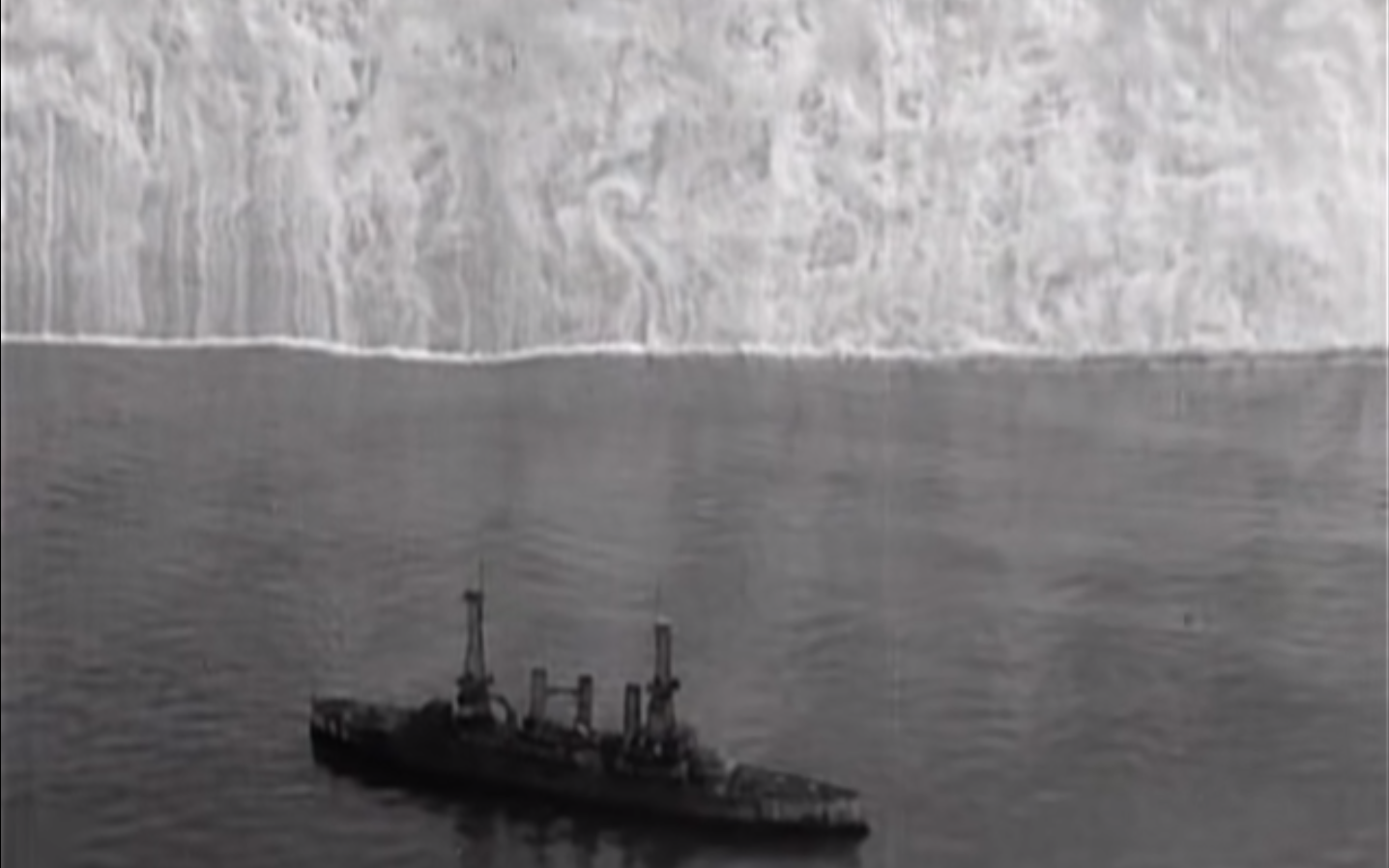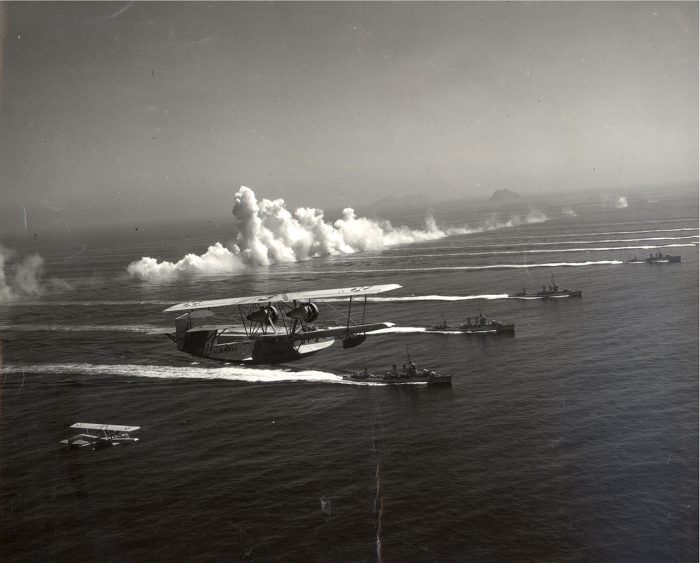Silent Video Shows Biplanes Creating Acid Smoke Curtains to Hide From Warships in 1920s US Military Exercises

In 1923 the US Air Force challenged the US Navy that a fleet of MB-2 biplane bombers would be able to destroy target warships. The challenge was accepted. A recently digitized video uploaded to YouTube shows the ingenious, if environmentally horrendous means employed by the air force.
An early proponent of the airplane’s power, Army Brigadier General William “Billy” Mitchell, insisted on a series of exercises that showed the ability of planes in theatres of war. He pitted a fleet of his Martin MB-2 biplanes equipped as bombers against warships supplied by the US Navy.
Mitchel claimed that airpower was vastly superior to naval power. He wanted to prove that a flight of his bombers could cripple any of the warships that the Navy currently owned.

Needless to say, this was not a challenge from which the Navy would back down. The test was laid down during a series of controversial military exercises from 1921 to 1923, off the United States’ east coast.
The silent video, taken by the US Army Engineering Division, shows, what appears to be, a Martin MB-2 biplane dropping a substance that seemingly creates a wall of ‘smoke’ several hundreds of feet high. The walls of ‘smoke’ could hide the entire US Navy, let alone a few biplanes. The video captions indicate that the screen was to protect the plane, one presumes from the anti-aircraft fire from the battleship.
The battleships in the video are either the USS Virginia or the USS New Jersey. These two surplus warships were supplied by the US Navy for the exercise and sunk by the bombers during the exercises.
The video does not indicate what the substance is the biplane drops, but one of the commentators on the YouTube feed suggests that it is most likely titanium tetrachloride. Titanium tetrachloride is a clear or yellow, corrosive liquid that is non-flammable, and it has one crucial feature. When exposed to damp air, it rapidly hydrolyses and creates a dense white smoke consisting of hydrogen chloride and droplets of hydrated titanium acid. Unsurprisingly, the smoke is hazardous to handle and is an irritant to the mucus linings of the nasal passages and lungs. It is also highly corrosive to metal.
In combat, smoke is used to conceal. It can be used either in offense, to hide an advance, or defense, to allow escape or movement to a better position. It is a temporary tool that blocks the line of sight to your opponent and, if done correctly, can be as impenetrable as a mountainside to the human eye. It does not provide the same level of physical protection as a mountainside as any weapon can fire through the smokescreen.

Smoke is rarely used in modern warfare as the advent of modern technology has made it obsolete. Radar and infrared technology can see through smoke with relative ease, but how this modern technology would have fared against a smokescreen created by titanium tetrachloride is unknown. At the least, the acidic components would have the potential to cause problems.
Another Article From Us: Striking photographs of the Soviet Bomber Fleet
In addition to modern technology ending the efficiency of smoke, most modern aircraft can launch their radar-controlled cruise missiles from over 50 miles away, further negating the use of smoke to hide them. Today’s bombers use a low-altitude flight, stealth and speed, and electronics to jam systems to creep up on warships. All in all, this is considerably more environmentally friendly than the acid smoke curtains of the 1920s.
